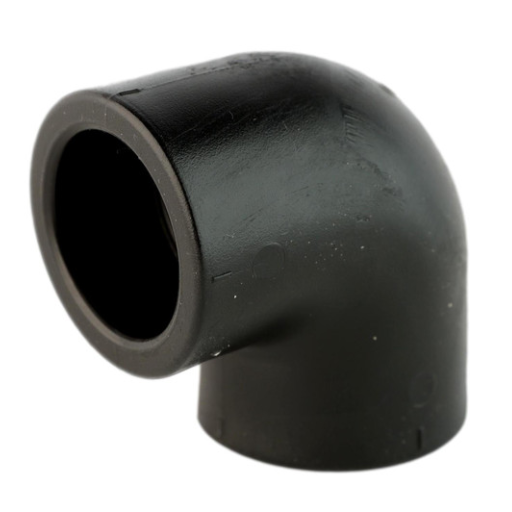This blog aims to explain the various aspects of Socket Fusion 90° Elbow Pipe Fitting, which is a vital element in the field of piping systems. It helps to maintain a smooth change in direction for PPR pipes and thus ensures that flow through the system remains efficient and that connections are reliable. Throughout this publication, we will review its design characteristics, installation methods, advantages, and applications so that readers can grasp why it matters in plumbing and industrial contexts. This comprehensive guide targets experts and do-it-yourselfers intending to improve their knowledge or recognition of this fixture.
What is a Socket Fusion 90° Elbow?
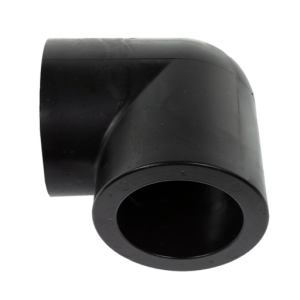
Image source: https://hdpesupply.com/
Socket fusion 90-degree elbow fitting is a type of pipe used in plumbing that connects two PPR (Polypropylene Random Copolymer) pipes perpendicularly, allowing changes in direction within a pipe. The tube ends, and the fitting is heated up during manufacture through the socket fusion process until they reach specific temperatures with cooling, creating permanent bonds between them, thereby making this fixture. It allows for flexibility in pipe layouts since it has an angle of 90 degrees, making efficient flow possible in plumbing and industry.
General Description of Socket Fusion 90° Elbow
The Socket Fusion 90° Elbow is explicitly made for turning the PPR pipe around on itself at a 90-degree angle, thus ensuring that water will flow in a directed and controlled manner. Its solid construction, often with a smooth inside, limits turbulence, improving transport efficiency. It can withstand high temperatures and pressure and can be used in residential plumbing and industrial applications. The use of socket fusion technology assures a durable, leak-free connection, improving the piping system’s longevity. It is easy to install in different sizes to ensure that the integrity and operability of PPR piping networks are constantly maintained.
Key Features of 90 Degree Elbows
- Durability: These are built using high-quality PPR material, which makes them resistant to rusting or wear and tear and, hence, long-lasting.
- Ease of Installation: The socket fusion technique makes installation very simple. Users only need to heat pipes and fittings and connect them together without any adhesive or extra fitting for strong, tight joints.
- Versatility: In some instances, this can range from home water supply systems to other complex industrial process devices where one may require these building blocks of various sizes.
- Flow Efficiency: These fittings’ smooth interior designs reduce the resistance factor to flow, resulting in less turbulent movement between sections.
-
Temperature Resistance: Socket Fusion 90° Elbows are engineered to resist such temperatures and pressures, confirming their dependability when placed in demanding environments necessary for maintaining output efficiencies.
Material and Durability
These elbows are made from Polypropylene Random Copolymer (PPR), which is highly durable and resistant to impact, corrosion, and many other chemical substances. This means that fittings will continue to work correctly even in the most challenging environments. PPR has a molecular structure that withstands high temperatures (as high as 95°C or 203°F) and pressures, making it ideal for cold and hot water applications. Besides, this lightweight property of PPR allows easy handling and reduces the overall pipe weight, enhancing installation efficiency. These elbows have been designed using top-grade materials and state-of-the-art manufacturing techniques, ensuring they can be used over long periods in diverse plumbing jobs.
How Does the Socket Fusion Method Work?
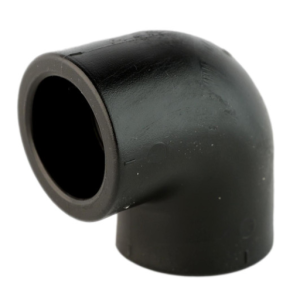
Socket fusion entails heating both pipes and fitting them before joining them by fusing them in a PPR piping system. For instance, at the beginning of this procedure, a heating tool heats the end of the pipe and the socket on the fitting to between 200-260°C (392-500°F). When the required temperature is reached, an operator rapidly inserts a heated pipe into a socket where melting material comes into contact. The connection cools slightly and then sets up, forming a solid joint that does not leak any fluid. This method can also last long since it is highly robust, unlike other methods that call for sealants or adhesives to secure connections within systems.
Socket Fusion Welding Process
PPR pipes and fittings can be joined through a simple and effective socket fusion welding process. This involves the precise cutting of the pipe ends to create clean fits, followed by using a fusion machine that heats the pipe and fits simultaneously. The suitable temperature usually varies from 200-260°C (392-500°F). When sufficiently heated, both surfaces are gently pressed to make a homogeneous bond as they fuse. The cooling period is the most critical stage since it allows the joint formed during fusion to solidify and become firm. It is commonly known for making leakproof joints, being robust, long-lasting, and maintaining an entire plumbing system.
Advantages of Socket Fusion for 90-Degree Elbows
Socket Fusion offers numerous benefits associated with joining 90-degree elbows in piping systems. First, this procedure results in a robust and tight joint, thus enhancing the overall integrity of a plumbing system as expected of high-pressure applications designed to work even under stressful conditions. Additionally, socket fusion allows for seamless connections, preventing common weak spots with alternative methods like threaded or glued joints. Besides, compared with other systems available on the market, this method has been seen as fast and efficient, which reduces installation times, thus bringing down costs, especially for large projects. Finally, socket fusion connections do not use additional adhesives or sealants; hence, they remain free from contamination, unlike other methods, making them more resistant to weather effects, too, and leading them to last longer than those subjected to such impacts.
Applications of Socket Fusion 90° Elbow
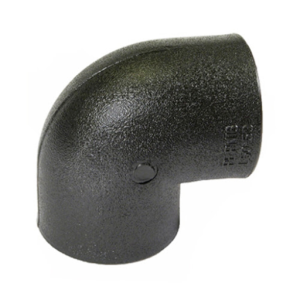
The primary reason socket fusion 90° elbows are mainstream in different piping systems is their reliability and firm characteristics. They are commonly used to change the direction of piping systems in residential and commercial plumbing systems. In addition, they are necessary for industrial uses such as water distribution, chemical processing, and HVAC, where there is a need for high-pressure integrity. Also, these elbows are becoming more common in utility installations like gas and water mains, which go a long way in ensuring leakage prevention and durability, respectively. Their versatility under different conditions makes them ideal for various applications.
Common Uses in Various Industries
Socket fusion 90° elbow can be integrated into many industries due to their sturdy nature. These are usually employed to cause a change of direction within the pipelines during plumbing activities that may be found in homes or commercial establishments. Additionally, such fittings allow easy arrangement of heating, ventilating, and air conditioning (HVAC) services pipes for efficient air dispersal within buildings during construction. Furthermore, socket fusion elbows are widely applied whenever chemicals or other fluids with safety issues have to be transported, as they prevent leaks while ensuring that whatever is being moved does not spill out along the road. From these examples, it can be concluded that socket fusion fittings are essential in various fields.
Specific Applications for HDPE Pipes
HDPE pipes are known for their strength and can be used in many areas. HDPE pipes are commonly employed in the water and wastewater sector to transport potable water, sewage, and stormwater due to their resistance to chemicals and corrosion. HDPE pipes benefit the gas distribution industry by providing an efficient and safe means of transmitting natural gas for use on a long-term basis. Furthermore, in the telecommunication field, HDPE pipes are utilized as conduits for fiber optic cables, ensuring they are easy to install while protecting them from damage. These applications demonstrate how well-suited HDPE is for use in crucial infrastructure.
How to Select the Right Socket Fusion 90-Degree Elbow
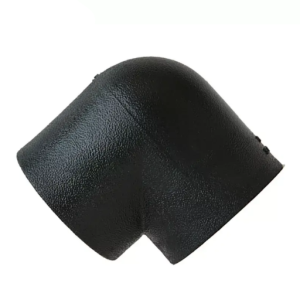
Selecting the correct socket fusion 90-degree elbow depends on several factors that ensure compatibility and performance. Initially, evaluate the pipe material and dimensions since elbows have to accurately match a specific pipe type like HDPE and its nominal diameter. In addition, one should consider the application’s pressure and temperature requirements so that it withstands all operating conditions. Similarly, check whether there is any need for a particular layout like standard bend angle or another version for specified layouts using fittings design. Finally, assess manufacturer specifications regarding certifications and quality standards so that you can choose an elbow that meets safety and reliability requirements set by relevant agencies in this industry. Thus, considering these factors will enable you to make wise decisions about your plumbing or industrial projects.
Criteria for Selecting the Correct Fitting
To ensure optimal performance and reliability, several criteria should be taken into consideration when choosing the right fitting:
- Material Compatibility: The fitting’s material must be compatible with the pipes and fluids being transported. For this reason, HDPE, PVC, and metallic options are made for different applications.
- Size and Dimensions: Accurately measuring pipe diameter and fitting size is critical. Therefore, it is advisable to use fittings with correct nominal sizes to prevent leakage and maintain system integrity.
- Pressure and Temperature Ratings: Check a fitting’s pressure and temperature ratings to verify that it can handle operating conditions in a system. This avoids premature failure due to thermal or pressure-related problems.
- Fitting Type: Depending on your specific layout requirements for the piping system, the various options include elbow and tee or couplings. The system must be designed to promote smooth flow while minimizing potential obstructions.
- Quality and Certification: Additionally, fittings that conform to industry standards may have certifications denoting quality and dependability. Thus, it pays off when you look up the manufacturer’s information regarding compliance with relevant regulations to avoid any possible danger.
By critically evaluating these criteria, you will be able to choose fittings that ensure longevity and efficiency in your plumbing or industrial systems.
Comparison with Similar Products
It’s advisable to compare similar products on the market when considering fittings.
- Schedule 40 PVC Fittings: These fittings are widely used in residential and commercial plumbing due to their cost and quick installation. They are rated for low-pressure applications and appropriate for non-potable water systems. Their adaptability to various fluid types makes them preferable.
- Copper Fittings: Copper fittings are known for their toughness and resistance to rust, making them suitable for hot and cold water plumbing systems. They usually have a higher pressure rating than their PVC or HDPE counterparts. However, they are likely to be more costly and require some soldering abilities during installation, which may not be good for those intending to do it themselves.
- HDPE Fittings: HDPE fittings are highly resistant to chemicals and flexible. They are mainly employed underground or when transporting liquids such as potable water. Most HDPE fittings have fusion welding, offering a firm join that enhances system efficiency and leads to a long service life.
In this regard, users can choose the best-fit accessories based on their specific needs regarding pricing and installation, among other things, and achieve optimum performance in their piping systems.
Different Categories and Brands of Socket Fusion 90° Elbow
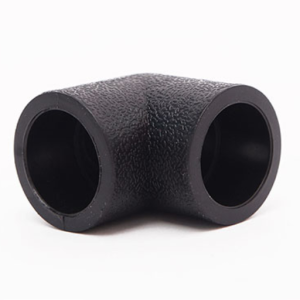
Socket fusion 90° elbows form vital parts of many different piping structures that allow flow continuity during direction alteration as required. They come in several varieties based on materials like PVC, CPVC, HDPE, etc., each having unique merits depending on the application domain where applied, for instance. Some popular brands offering high-quality socket fusion 90° elbows are mentioned below:
- Spears Manufacturing: This company offers a comprehensive line of PVC and CPVC fitting products famous for their durability and high-performance levels.
- GF Piping Systems: This brand offers modernized piping solutions, with a specialty in providing advanced industrial-purpose sockets made of HDPE exhibiting remarkable chemical stability.
- Harvel Plastics: Harvel plastics produce PVC fittings that are regularly used in water and wastewater treatments because of their ruggedness and low costs.
By looking at the category and the brand, experts can be sure that their projects will have high-performing socket fusion 90° elbows to meet specific operation requirements.
Overview of Popular Brands
When choosing socket fusion 90° elbows, knowing what the leading brands offer can significantly influence your decision. Below is a short description of some of the best brands:
- Charlotte Pipe: Charlotte Pipe is one of the largest PVC product manufacturers in the United States, known for its durable and innovative designs. The socket fusion 90° elbows from this brand are highly noted for easy installation, and their different sizes fit various applications for durability in pipe systems.
- Georg Fischer: This company is famous for its high-quality plastic piping solutions, mainly HDPE and PP fittings. Their Socket fusion 90° elbow is designed to handle harsh industrial conditions, offering better performance and reliability than others. They have earned customers’ trust through an eco-friendly production process and comprehensive technical backup.
- Rifeng: Rifeng has a big share in residential and commercial plumbing markets. It is recognized for having a flexible range of socket fusion fittings, including 90 ° elbows, meant for simple set-up and compatibility with existing systems. Hence, quality and cost-effectiveness have made it a preferable choice among many plumbers.
These brands are known for their professionalism and the quality of their products, which assist users in selecting the appropriate socket fused 90-degree elbows depending on their requirements.
Different Types within This Category
Various types of 90° elbows are available for different applications and materials for socket fusion. Below are the main kinds.
- PVC 90° Elbows: These types are suitable for typical plumbing tasks and will give residential or commercial areas a solid connection. PVC bends do not corrode and weigh very little, making them simple to transport.
- HDPE 90° Elbows: These bends are made from high-density polyethylene and are used in under-ground and high-pressure situations. HDPE is highly flexible, impact resistant, and can withstand chemical effects, thus guaranteeing durability against challenging environments.
- PP 90° Elbows: Polypropylene elbows are mainly used in industrial applications that require resistance to high temperatures. They are particularly useful for carrying hot fluids and are also resistant to harsh chemicals.
Knowing these differences can help you choose the right type of socket fusion elbow for your project requirements to have efficient piping systems that last long.
Reference sources
-
HDPE Socket Fusion 90° Elbow Fittings – HDPE Supply
This source provides a detailed overview of HDPE socket fusion 90° elbow fittings, including their specifications, applications, and the fusion process. It offers technical insights and practical guidelines for using these fittings in various piping systems.
Read more -
HDPE Socket Fusion 90° Elbow Fittings – ISCO Industries
ISCO Industries’ page covers the production standards, testing procedures, and quality assurance for HDPE socket fusion 90° elbow fittings. The content explores the benefits and applications of these fittings in different industries, providing a comprehensive guide.
Read more -
HDPE Socket Fusion 90° Elbow Fittings – SUNPLAST
SUNPLAST offers in-depth information on HDPE socket fusion 90° elbow fittings, highlighting their features, advantages, and uses. The site also covers the manufacturing process and quality standards followed during production.
Read more
Related Articles: About Socket Fusion 90° Elbow Application Areas



